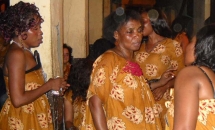The asabiyah refers to a socio-cultural link that can be used to gauge the strength of social groupings. Used in the pre-Islamic era, it has become popular among intellectuals from different disciplines, due to the fact that it was also used by Ibn Jaldūn (1332-1406) in his work Muqaddimah.
The asabiyah is a polysemous concept that can be understood as a social solidarity with an emphasis on group awareness, cohesion and unity, but which is not necessarily typical of nomads, nor is it based on bloodlines. A number of different writers, including Durkheim, have claimed that it represents a mechanical solidarity of a tribal nature. But the question is: how to go from tribal democracy (mechanical solidarity) to modern democracy (organic solidarity)? The field work carried out by Maria Angels Roque in southern Morocco in the late 1990s gives us a few clues regarding the associative phenomenon and rural-city solidarity.
Cycle: The State of the World_I.AFRICA
Organized by: Residence for Researchers and Institució Milà i Fontanals-CSIC
